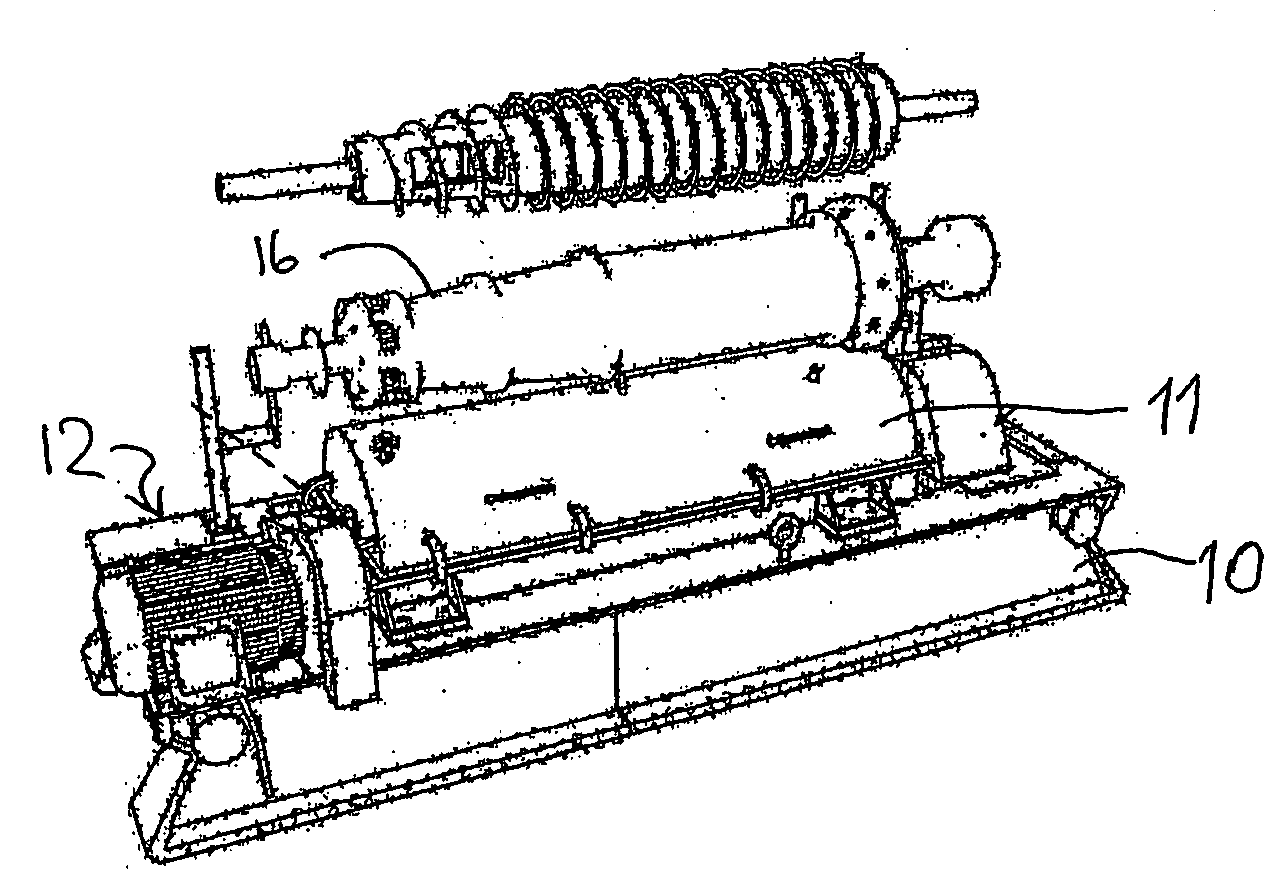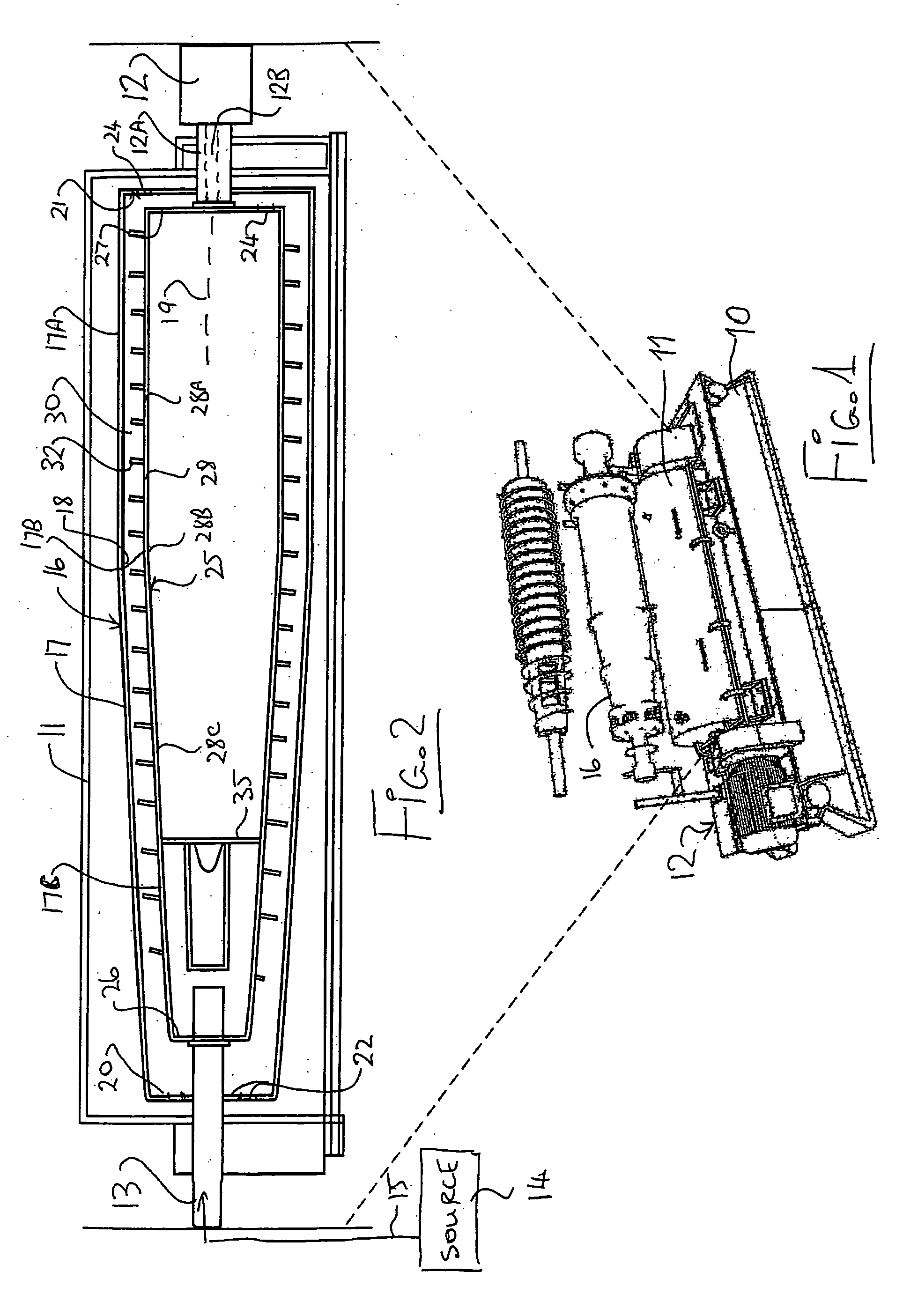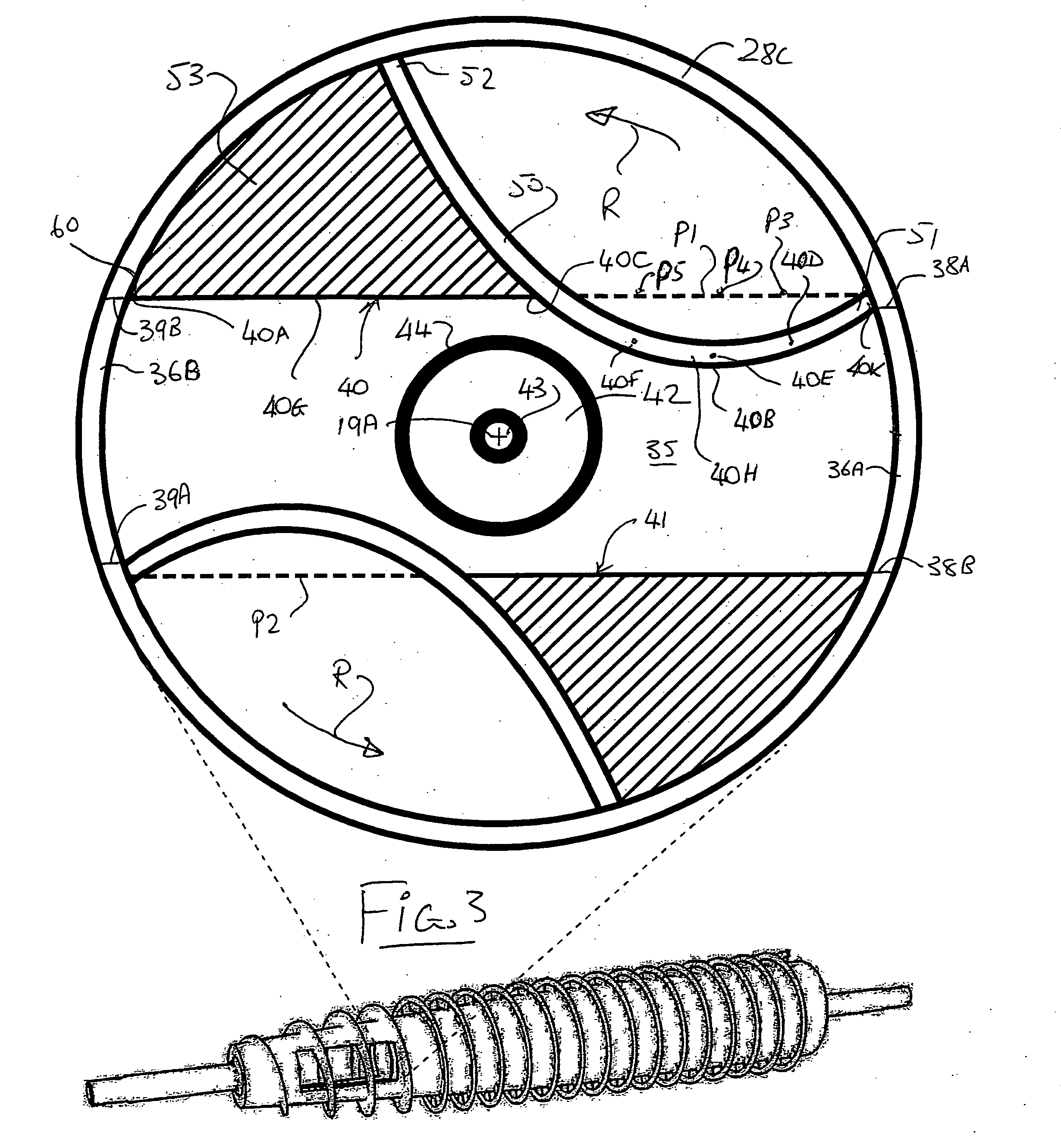Centrifuge with shaping of feed chamber to reduce wear
- Summary
- Abstract
- Description
- Claims
- Application Information
AI Technical Summary
Benefits of technology
Problems solved by technology
Method used
Image
Examples
Embodiment Construction
[0074] In FIG. 1 is shown schematically a centrifuge of the type with which the present invention is concerned. Centrifuges of this type have been manufactured for a number of years by the present assignee and details of the general construction of this centrifuge is well known to one skilled in the art.
[0075] The centrifuge generally comprises a base skid 10 on which is mounted on a fixed housing 11. The housing can be opened to access the interior of the housing and the elements therein. At one end of the housing is provided a motor and gear box arrangement schematically indicated at 12 which provides drive to the components inside the housing 11. At the other end of the housing is provided a feed duct 13 for supply of slurry from a source 14 through a duct 15.
[0076] Within the fixed housing 11 is provided an outer bowl 16 having a peripheral wall 17 with an inside surface 18. The bowl is mounted for rotation about a longitudinal axis 19 so that the inside surface of the periphe...
PUM
 Login to View More
Login to View More Abstract
Description
Claims
Application Information
 Login to View More
Login to View More - R&D
- Intellectual Property
- Life Sciences
- Materials
- Tech Scout
- Unparalleled Data Quality
- Higher Quality Content
- 60% Fewer Hallucinations
Browse by: Latest US Patents, China's latest patents, Technical Efficacy Thesaurus, Application Domain, Technology Topic, Popular Technical Reports.
© 2025 PatSnap. All rights reserved.Legal|Privacy policy|Modern Slavery Act Transparency Statement|Sitemap|About US| Contact US: help@patsnap.com



